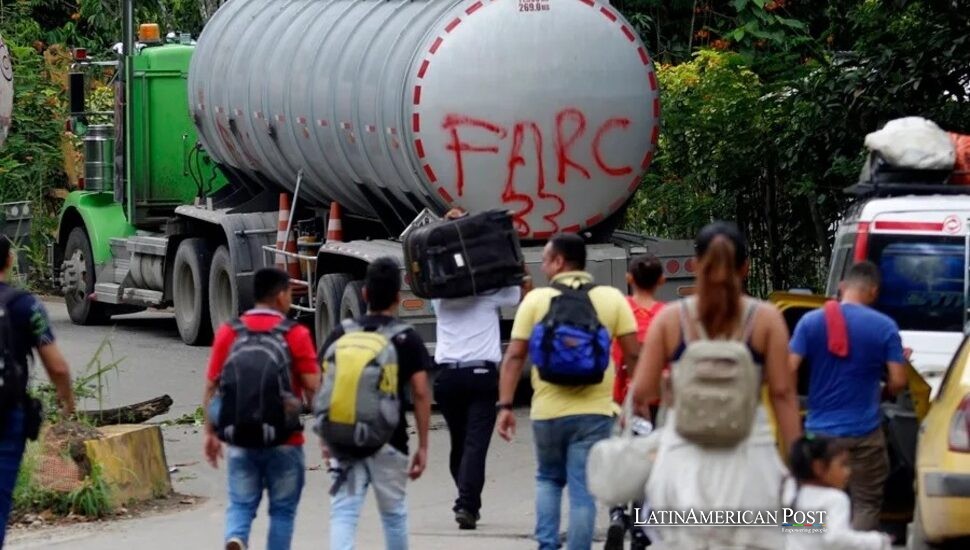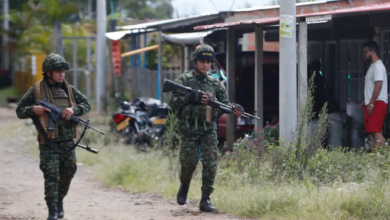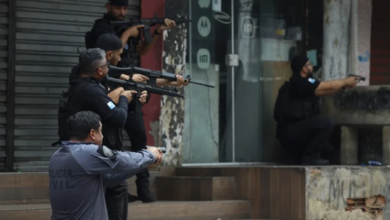Colombia's Violence Escalation Undermines Peace Accords

In Colombia’s Catatumbo region, clashes between armed groups have resulted in over 80 deaths and 11,000 displacements since the 2016 peace accords. Washington Post interviews reveal the fragility of peace and rising tensions with the US administration.
Escalation in Catatumbo
The year 2024 has plunged Colombia into one of the deadliest periods of violence since the signing of its 2016 peace accords. In the coca-rich Catatumbo region, fierce clashes between rival guerrilla factions have left more than 80 people dead and displaced over 11,000 residents. The new wave of unrest puts the peace deal at risk, which President Gustavo Petro established, plus adds pressure to Colombia’s already tense ties with the incoming US administration of President Donald Trump.
The Catatumbo region, nestled in northeastern Colombia near the Venezuelan border, has long been a strategic area for coca cultivation and smuggling routes. Recent days have seen an unprecedented surge in violence between the National Liberation Army (ELN), Colombia’s most significant remaining leftist guerrilla group, and a splinter faction of the Revolutionary Armed Forces of Colombia (FARC). These clashes have intensified local conflict and disrupted the broader peace process initiated by Petro’s administration.
Elizabeth Dickinson, a senior analyst for the International Crisis Group in Colombia, describes the situation as “spiraling out of control very quickly.” According to Dickinson, “It’s going to be very difficult for Petro to reel the security situation back in because we have overt, massive conflict in regions that were pretty quiet up until now.” The breakdown of negotiations with the ELN, the first armed group to engage in talks, has left Petro’s total peace strategy vulnerable and exposed to further destabilization.
The Fragility of Total Peace
President Gustavo Petro, Colombia’s first leftist leader, launched an ambitious “total peace” plan to simultaneously negotiate with multiple armed groups. The approach intended to solve the fundamental problems that caused conflicts: widespread poverty plus unfair treatment of people to reach stable peace. However, the new outbreaks of violence in Catatumbo show how fragile the peace process is. In a statement to The Washington Post, Dickinson says, “The collapse of this agreement hits hard as well as represents a setback to complete peace.” It was this one thing that Petro thought he could do, and now they’re leading the charge to unravel the whole strategy.”
The ongoing conflict between the ELN and FARC dissidents disrupts the peace process by diverting government resources and attention away from negotiations. The strategic value of Catatumbo as a nerve center for cocaine production plus trafficking turns it into a very profitable battleground for these armed factions. This complicates any attempt to establish order and cut down on illegal operations in the area.
Humanitarian Crisis and Displacement
The fresh outbreak of violence led to a dire human crisis as thousands left their homes to find protection. The border city of Cúcuta became a main refuge for displaced Colombians who arrived in truck convoys to escape the turmoil. Local officials report that at least 5,000 people have sought refuge in Cúcuta, a city already grappling with its influx of Venezuelan migrants fleeing political and economic turmoil.
Iris Marín Ortiz, head of Colombia’s ombudsman’s office, emphasizes the indiscriminate nature of the violence: “The victims include local community leaders, children, and civilians who are accused of collaborating with one group or the other simply because they are family members or people close to them.” The lack of security in Catatumbo puts lives at risk – both those who take part in the conflict plus innocent people trapped amid the violence.
The mass movement of people has put pressure on local supplies and systems, complicating the work of aid groups that help affected communities. The international observers closely monitor the situation, as the problems in Catatumbo might affect the entire region’s stability and population movements.
International Implications and US-Colombia Relations
The escalating conflict in Colombia comes at a time of strained relations between Colombia and the United States. President Donald Trump’s administration has been critical of Petro’s handling of the country’s conflict and the surge in cocaine production. Washington Office on Latin America’s Andes director, Gimena Sánchez-Garzoli, warns that the violence could “further threaten U.S. support for peace talks in Colombia.”
The Trump team’s views on immigration plus drug rules might shape how they deal with Colombia’s conflict. Experts suggest that the US could press Petro’s government to take stricter action against rebel groups, which might push peace talks aside.
Catatumbo’s location next to Venezuela creates very real problems. Armed groups move freely across the Venezuelan border and use smuggling routes to transport supplies, which makes the conflict worse. The Washington Post’s Bogotá bureau chief, Samantha Schmidt, highlights the regional dynamics: “The whole situation puts the Petro government in a terrible place.”
Venezuela adds troops along its border due to large numbers of Colombian refugees, plus the risk of border clashes rises. The situation makes Colombia’s path to peace complex and creates significant worries about how domestic problems affect nearby nations.
The Human Cost of Conflict
Behind the statistics of death and displacement lie deeply personal stories of loss, resilience, and hope. Héctor Benjamín Xoc Xar, a Guatemalan worker who has made two trips to the US via the H-2A visa, illustrates the broader human impact of migration and conflict. “I want my children to do better than me academically,” Héctor explains. “I left school young to work in the fields. Before I got this work, it looked like my daughter wouldn’t finish her final year studying accountancy because we couldn’t afford it. Now I’ve paid for her, and she’s working as an accountant.”
Similarly, Sandra Noemi Bucu Saz’s experience as a farm laborer in California underscores the economic opportunities and risks associated with legal migration programs. The search for higher wages leads many workers to fall victim to exploitation and various scams. This really points to the necessity of solid safety measures and aid programs for migrant workers.
The Path Forward: Strengthening Peace Efforts
A new path to stopping violence in Colombia requires a mix of peace programs, security reforms, and economic growth. The Petro government needs to open talks with armed groups but must shield communities simultaneously. A revised plan for law enforcement, aid to local areas, and job creation will lead to actual peace.
The US and nearby countries will shape Colombia’s path to calm. Good talks plus focused aid projects may reduce the main reasons for conflict next to the power of guerrilla groups.
The country needs to restrict outside influences plus crime networks. Better border control, along with the breakup of smuggling rings as well as reduced cocaine output, really matters in a total plan to stop violence.
A Critical Juncture for Colombia
Colombia stands at a critical juncture where renewed violence and complex geopolitical dynamics threaten the promise of peace. A deteriorating situation in Catatumbo weakens the peace deals plus affects Colombia’s bonds with vital foreign partners. The conflict takes lives next to forcing people from their homes – so the road to peace needs real commitment, better security plans as well as broad-reaching financial reforms.
Also Read: Latin America Does Require Tougher U.S. Immigration Policies
The tales of people like Sandra and Héctor show the very personal side of Colombia’s troubles, along with the pressing demand for real solutions that put residents first. The country now faces its most lethal surge of unrest in years, but the sheer determination of its people remains a light of promise for a safer and richer tomorrow.




